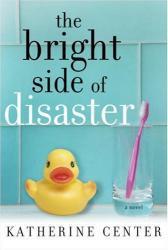
Typical chick lit. Well written but very formulaic. That's okay, it is what it is. I enjoyed the respite from deeper waters.
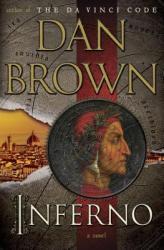
In this, the fourth installment of the Robert Langdon series, Dan Brown has continued to successfully marry science to art, albeit with the same tropes and trappings that occur in the book’s predecessors. With Inferno, we get the same race across Europe explored in Angels & Demons and The Da Vinci Code, with the ambiguity of the antagonist’s motives that fueled The Lost Symbol . All throughout this adventure, the now-standard “female who is an expert in her field” accompanies Langdon as he tries to unravel the mystery and save the world. Langdon continues to be part Indiana Jones and part James Bond, that’s for sure.
Utilizing the standard “temporary amnesia” plot device, Brown refines his style while also increasing the stakes. While previous books in the series had potential impacts on the local and national levels, Inferno takes the antagonist’s plan to a global scale. With the main character as talented with memory as Robert Langdon is, taking away his recent memories was a good way to have him re-learn the situation at the same time the audience does. This also allows for some entertaining twists and turns as characters’ motives are revealed, often taking the plot in a quick 180° turn.
While much of the historical plot of Inferno focuses on the titular work by Dante, the scientific side of the story is incredibly relevant. Previous Brown books like Angels & Demons or The Lost Symbol certainly had some interesting scientific intertwining, but Inferno examines one of the most pressing issues within the scientific community right now. This issue, much like global climate change, has no easy answer, and Brown’s solution through the book’s antagonist is certainly a terrifying answer, even if it is probably the most humane way to go about implementing it.
The best book in the Robert Langdon series to date, I give Inferno 4.0 stars out of 5.
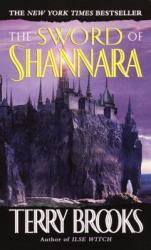
Tell me if you’ve heard this one before: an unassuming character is given the task to use a magical item to destroy a great evil that once terrorized the world. To help this character on their quest is their best friend, a magic-wielding individual, a ranger with a love interest, a dwarf, and some elves. Look, I get that The Lord of the Rings redefined the fantasy genre in the 1950’s, but why were fantasy writers still replicating this formula twenty years later? I only half-paid attention to this derivative plot, mostly because I already had an idea what was going to happen.
Now, I will admit that The Sword of Shannara isn’t completely a 1-for-1 rehashing of The Lord of the Rings, but enough of it is similar that it feels almost too familiar. The plot does divert from the Tolkien formula, but probably not until about halfway through. It was at this point where some interesting and original characters finally arrived on the scene. A mute rock troll and his thieving friend were quite entertaining, and I would almost prefer if the story was about them instead of about this titular and fabled sword of legend.
Just enough of this book was different enough to make it engaging. Sure, some of the same Lord of the Rings plot points were there, albeit in a different order, but the details were just unique enough to give the characters their own little side quests. I know it 's hard to introduce an entire fantasy world in one book, so I’m willing to give this trilogy a bit of slack, but only as long as the next book in the series goes in a new and original direction and doesn’t just follow the Lord of the Rings template.
Moments of originality in a mostly derivative plot, I give The Sword of Shannara 2.5 stars out of 5.
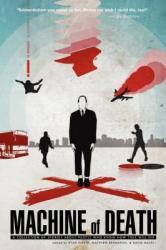
The concept is simple: a machine takes your blood and spits out a card with the means of your demise printed on it. In this collection of short stories, a variety of authors explore what this truly means for individuals, as well as society as a whole. Based off an idea by Ryan North (author of “Dinosaur Comics”), this anthology has plenty of different approaches to the concept that a machine could predict how a person will die. However, many of these ideas hit upon the same concepts and social implications, making the whole thought exercise seem redundant by the end of the book.
Part of me felt the idea itself was a little derivative of Death Note, but with a more ambiguous set of constraints. Each of the short stories included in this anthology had some unique twist on the idea, ranging from humor to romance to horror. Still, every author tended to agree: a machine of death would bring about a dystopian future in some form or other. From governments requiring a “death reading” to mitigate any national disasters to a school needing to know how their prospective students will die so they can save face, the real enemies of this idea tended to be the bureaucracies of humanity.
While I honestly enjoyed the stories included in this anthology, they all seemed to suffer from the “a priori problem.” With each story titled with some way to die, you half-expect the story’s main character to end via that method. The intrigue is more in the how and when; thus providing interest to the story despite practically knowing the ending before it even starts. Granted, that’s part of the appeal of the machine: the ambiguity is as freeing as it is constraining.
A morbid set of interesting short stories, I give Machine of Death 4.0 stars out of 5.
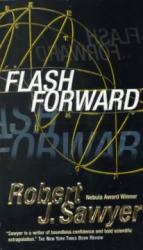
As time marches on, predictions of the future made in the past are tested against reality. In 1984, we didn't have George Orwell's dystopian government. In 2001, we didn't have Arthur C. Clarke's interplanetary travel. Sure, these authors did have a few interesting ideas that did come true, eventually. Still, they were writing well before the events in their books would come to pass. Robert J. Sawyer's Flashforward did not have that luxury. Written in 1999, Sawyer only imagines a future set a decade in the future. For those keeping track at home, Flashforward takes place in 2009, with a vision of a future 21 years ahead of that. Since 2009 has come and gone, there were a few things Sawyer got right, but many he could not have predicted.
The crux of this story is similar to that explored by Machine of Death: everyone in the world gets a glimpse of their future in 2030, thus causing everyone to react based on what they saw. Some were encouraged by what they saw, others despondent and suicidal. The people who had negative visions hoped the future could change, especially if their lives were on the line. Many of the "effects" of the look into the future were logical conclusions, which added an amount of interest to the story but with a cheap cop-out to keep from killing off all the characters. With all the different characters and POVs, it was somewhat difficult to follow along each time the
focus changed, since there was nothing to indicate a change of view.
I also appreciated the conversation this book had in regards to science and the many existing theories about the future. While this exploration of science also included the discovery of the Higgs Boson (which didn't happen until 2012), I was continually distracted by the narrator's pronunciation of "CERN," which sounded more like "sairn" instead of how I thought it was pronounced ("sirn"). I did appreciate the narrator's ability to mimic multiple accents, but that one pronunciation threw me.
A recent book about the "future" that gets a few things correct, I give Flashforward 3.5 stars out of 5.
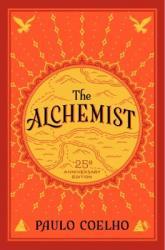
I first picked up this book when I was in maybe 6th grade and I absolutely hated it, I had no clue what it was about and why it was an "adventure" book that didn't really have a lot of action in it. Having picked up this book again this year (and actually finishing it this time) I can honestly say this story made me want to reevaluate how I have lived my entire life. The story follows a boy named Santiago as he searches for his personal legend, in other words, the reason he is alive, his purpose. This is a book that makes you want to go out and chase your dreams no matter what, and it is beautifully written. The novel takes you through the ups and downs of life and proves that sometimes your hard work is worth it in the end, whether you accomplish what you set out to do out not. I think this is a book where the messaged can’t be fully realized until your a little bit older, but to anyone struggling with what they want to do in life or even just where to start, this book is amazing, it made me feel like anything is possible. Just read it, I promise it’s good.
Reviewer: Grade 11
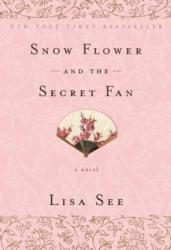
In the midst of desperately trying to find a historical fiction novel to read for my English class, I picked up Lisa See’s book and immediately fell in love. This book is told through the main character, Lily, as she recalls her past as an older woman. As a young girl, Lily was promised to her laotong, Snow Flower. To be a laotong in China means to be best friends, to be closer than sisters, and to never leave each other’s sides. As Lily grows up throughout the book, she recalls her stories of love and loss that shaped her entire life, most importantly in regards to Snow Flower. This book gives an important look into the lives of woman in early China, about the standards they were held to as far as their appearance goes, and the strict rules they had to follow just to live a "fulfilled" life. For anyone who is interested in learning more about the Chinese culture or simply reading a beautiful story of love and friendship, I highly recommend. (Not gonna lie, I cried at the end, this book is actually amazing).
Reviewer: Grade 11
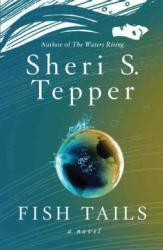
I decided to choose the book because it looked like it would tell a great story and it did. I liked the book due to its great lessons inside about the imperfections of our minds, but the greatness of them too. The part I enjoyed most was the journey f the main characters and how they didn't change their personalities and stayed focused on the topic. The part I didn't really enjoy was that the story went kinda slow. The book was pretty predictable, but the lessons and thoughts behind you need to think more about to get, so it was still entertaining to read. It was an amazing book to read and I definitely recommend it.
Reviewer Grade: 10
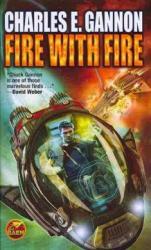
I’m not sure which is more boring in a book: a plot that doesn’t go anywhere, or a main character who is perfect. Unfortunately, Fire with Fire has both. I’ll first start with my qualms about the plot. This story started way too late, as it didn’t get interesting until halfway through.
Even when it did finally get interesting, it suddenly became bogged down in committee. Seriously? Didn’t we learn anything from the Star Wars prequels?
Adding politics to a story about traveling across space merely makes it tedious. This is also not to mention how heavy and clunky the exposition is, with almost every chapter being filled with information that isn’t important, and the jumps between chapters needing way more explanation.
Secondly, let’s take a look at “Mr. Perfect,” Caine Riordan. Aside from the egregious fact that the POV switched between 1st person and 3rd person within most of the paragraphs of his section (with no italics or indication that we were suddenly in Caine’s head), I felt this character was just the author’s way to show how smart he is. With the expansive repertoire of high-value vocabulary words and a character that always knows what to do all the time and has all the correct answers, I ended up not caring about any of it by the end. And I haven’t even mentioned the blatant and pervasive misogyny either.
Even the rest of the supporting cast was so flat and one-dimensional that I probably couldn’t tell you who they were or what their defining characteristics were (aside from that one mysterious guy who LOVED olives and feta cheese). Most of the time I was reading this book, I kept wondering, “Wait . . . what?” as what seemed to be major plot points were introduced then almost immediately forgotten until hundreds of pages later. I’m not sure how this book managed to get a series tacked on to it, or how it was even nominated for a Nebula Award, but it gives me encouragement that I could write something way better than this.
Antiquated sci-fi tropes in a recently written book, I give Fire with Fire 2.0 stars out of 5.

For the last few years, Brandon Sanderson’s name kept coming up amongst my writer friends. I had never heard of him, but they had been fans of his writing for some time. In my goal to read all the unread books I own, I found that I had obtained a Brandon Sanderson book many years ago as a prize during my first National Novel Writing Month. Even with the daunting page count, I decided to give Warbreaker a read. All I can say is that it was refreshing to finally read a fantasy book written by someone who genuinely knows what they’re doing.
I’ve read a lot of books recently that I would consider “amateur,” but Sanderson proves he’s a professional in this tightly written book. From incredibly interesting and entertaining characters to expertly placed foreshadowing to a fascinating magic system, Warbreaker is fully original while also maintaining the tropes and structure of a high fantasy novel. The twists in the plot continued to grab my attention as the mystery surrounding these characters unfolded. As I read, I had a few qualms with minor points in the story, but Sanderson managed to quash these negative points by the end of the book.
I have stayed away from the fantasy genre for a long time because I know how lengthy some of these book series can be, and I didn’t want to become invested in something that might not even reach its penultimate conclusion.
Fortunately, Warbreaker is well-encapsulated in its own, standalone story.
Sure, there are hints at what the future may hold for some of these characters, but nothing was particularly pressing or “cliffhanger-ish” in this book. Either way, consider me a believer in the fantasy genre, and in Sanderson particularly. Maybe now it’s time I started to dive into his other works.
An original and highly entertaining fantasy story, I give Warbreaker 5.0 stars out of 5.
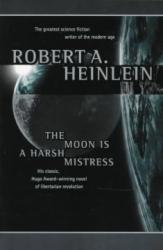
Certainly well ahead of his time, Robert A. Heinlein remains one of the definitive writers of the science fiction genre, even today. In The Moon is a Harsh Mistress, Heinlein covers such topics as artificial intelligence, extraterrestrial colonization, and interplanetary warfare. Even today, most of these subjects are accurately depicted in the narrative, even if some of the technology has advanced past where it was thought to be in 1965. Part of me is almost jealous at Heinlein’s ingenious use of Earth’s gravity well, and I know any attempt I might make to replicate the idea will merely seem derivative in comparison.
As is the case with some of his other works, Heinlein makes many socio-political statements via his writing. His stance on taxes, revolutions, and independent governing bodies is a critical section of the plot in The Moon is a Harsh Mistress, and I can certainly see the theoretical benefits he puts forth in this context. That being said, his views on polygamy and polyamorous relationships are certainly on display again, with his previous work, Stranger in a Strange Land exploring these themes in greater detail. I can only assume the "free love" culture of the 1960's shaped these opinions.
Overall, the book wasn’t quite what I expected. The initial chapters made me hope the plot would center on the relationships between man and artificial intelligence (AI). If anything, AI is shown to be a powerful tool that can influence society in ways we can’t even begin to comprehend. At the very least, the main character was quite entertaining, if not hard to understand at times with his “accent.” If we do eventually colonize the moon, I can hope we do so peacefully and in a way that doesn’t lead to an uprising of its native inhabitants. After all, I do like living in a Colorado Springs devoid of meteoric bombardment.
A well-thought out sci-fi story decades ahead of its time, I give The Moon is a Harsh Mistress 4.0 stars out of 5.
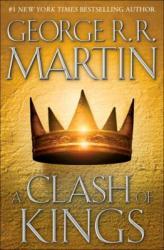
A Clash of Kings is the second book in Martin's A Song of Ice and Fire. After adoring the first book, I was not at all disappointed with the second. The immensely complex fantasy world only continues to grow and develop in this book, as do the characters. George R. R. Martin perfectly juggles all the different storylines, making them all interesting, suspenseful, and fascinating. His characters are so 3-dimensional that characters the reader hates in the first book begin to be shown in a new light. I very strongly recommend this book to anyone that read A Game of Thrones. Every paragraph in this book is so richly embellished and detailed that as I read these books, I felt like I was learning the history of another country.
Reviewer Grade: 11
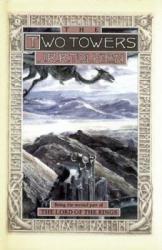
The second installment in J.R.R. Tolkien's "Lord of the Rings" trilogy, "The Two Towers," takes up the challenge of doubling up on the success of Tolkien's previous novel. This is a daunting task, as fans clamored to the brilliant and wonderfully crafted masterpiece of "The Fellowship of the Ring". Though after having read and thoroughly reflected upon Tolkien's most recent work, I am pleased to say that he was able to exceed my expectations.
The novel begins directly where the last left off, with Frodo Baggins having been taken hostage by a group of vicious orcs. In spite of this setback, he is still on a quest to destroy the mystical ring, but as is to be expected in such a story, his journey is neither simple nor straight-forward.
Along the way, Frodo makes encounters with a number of new characters, ever-diversifying this creative and beautifully crafted story. Their journey stands witness to a number of conflicts, wars, and battles, with various different social groups across the realm taking part. Through it all, as Frodo inches closer to his destination, the faded shadow of Mordor- where the Dark Kingdom and Sauron await- gleams in his foresight.
I originally picked up this novel immediately after the last, and am glad to have read it. Some may not enjoy the novel quite as much, due to the fact that the language is very particular and can sometimes present readers with a bit of a learning-curve. However, the story manages to continue to enhance the rich narrative setup in the previous novel, and does a wonderful job with transitioning the story forward. Tolkien’s colorful and imaginative lore’s, histories, and descriptions truly make this novel a must read!
Reviewer’s Grade Level: 10
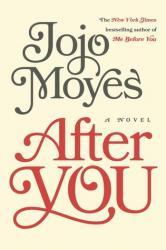
See, here's the problem: I wasn't that enamored with the first book in this series (Me Before You). It just didn't wow me. So with that book as a jumping-off point, this book didn't stand a chance at getting above 3 stars. Still, it was pretty good. The ending was super cheesy, though, which tempts me to give it 2 stars. But hey, I'm feeling generous, so 3 stars it is.
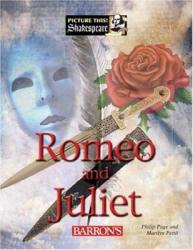
As is likely the case with many readers, I was assigned to study the play "Romeo and Juliet" in a high school English class. While it's true that I was led on to read the book out of obligation, I ended up forming some pretty spirited opinions on the novel. I definitely was not engaged in this read, but even still, am able to respect its excellence in the context of Shakespeare's time.
As a reader, you can tell that the language used is vastly different from that of the common, English vernacular. For this reason, it can sometimes be a challenge to understand what is going on in the plot, especially since the story is told through the lens of a play. Before attempting this read, I would certainly brush up on some basic play terms, to grasp a better understanding of the composition of such a work.
Another factor contributing to the difficulty of this read is Shakespeare’s use of Iambic Pentameter, a rhyming scheme ideal for sonnets where three sets of rhyming quatrains and two lines of rhyming couplets are alternated. I found it truly impressive that Shakespeare manages to devise these rhymes with so much detail and insight. To go through with reading this novel, I would have to suggest to understand the rhyming scene of Iambic Pentameter, as doing so allows you to come to terms with a greater appreciation for Shakespeare’s work.
I found the plot itself to be a bit too inconstant. While at first the novel seems somewhat believable, the ending turns totally wild and unpredictable. I don’t mean to critique Shakespeare’s work, as his play was truly revolutionary for its time, but to a 21st century teen, this novel may not be the most enjoyable.
In terms of the themes, the novel excels with powerful and proactive lessons.
Reflecting on the plot, and Shakespeare’s use of literary devices such as foreshadowing, can lead to meaningful conversations and analyses about life, love, and happiness.
Overall, I would pin my recommendation on this book, but only if you take the time to understand the niche delicacies of Shakespeare’s writing. At face value, the novel may not seem the most exciting or engaging to the reader, but by appreciating the literary masterpiece found in Shakespeare’s work, you’ll definitely enjoy the read!
Reviewer’s Grade Level: 10
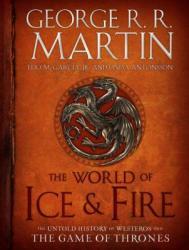
George R.R. Martin's "A Song of Ice and Fire" trilogy took the book-industry by storm, selling millions of copies and reinventing the fantasy genre. Most would agree that Martin's vast success can be attributed to his holistic storytelling approach, incorporating rich lore and imaginative histories.
Martin continues to cultivate this project with his next work, "The World of Ice & Fire: The Untold History of Westeros and the Game of Thrones" by Elio M. García Jr., George R.R. Martin, and Linda Anntonsson. The novel takes up the task of expanding on these histories, and presenting readers with a deeper knowledge of the ancient tales of Westeros. Suffice it to say, readers were pleased when they learned of Martin's decision to further detail this flavorful world of Ice and Fire.
The first portions of the project focus primarily on the histories before Aegon the Conqueror and the Reign of Targaryen Kings. As such, readers are given insightful details on the centuries of Westerosi history, involving major houses, their leaders, and the players in the Game of Thrones.
The book progresses to further recount the history of the Targaryen household, and its reign in Westeros. For book readers and show watchers alike, this section is staggering- with an enormous amount of detail on the countless leaders who have all worked in succession to paint the colourful history of Targaryen rule.
Final portions of the book are dedicated to specific regions in Westeros and their cultural background. It is quite spectacular to read through the rich accounts of history, and to diversify your mind learning about the many peoples of Westeros. Each culture is different from the other, with their experiences having shaped the core of their identity as a people. Martin conveys these rich cultural contrasts in his work, and it is a pleasure as a reader to learn about them.
While a majority of this information is passed down from the Song of Ice and Fire trilogy, this book offers a plethora of eye-opening illustrations. I can honestly say that the art brought a whole new facet of imagination to my experience as a reader, and brought new light to many familiar characters, locations, and landscapes across Westeros.
It's true that this book is only written in part by Martin, and while this is noticeable as a reader, I felt that the other authors did a fantastic job with carrying on Martin's vision. Their contributions seem to have shaped the book in so many positive ways, and along with Martin, their work has brought an even more colorful depiction of the world fans have come to love so dearly.
If I were to file a complaint about this novel, I might have to say that at times, it felt more like a textbook than a fantasy novel. The dense collection of information is certainly something I appreciate as a reader, but the book may not appeal to all types of readers. I would recommend the novel more to readers of ASOIAF, rather than those who have simply watching the 'Game of Thrones' TV series.
Overall, if you're familiar with the Westerosi universe, and are a prior fan of Martin's work, I certainly think that this book will strike your enjoyment. Martin presents readers with countless rich histories and depictions; and coupled with fantastic art from more than a dozen skilled artists, this novel makes for a truly unforgettable read!
Reviewer's Grade Level: 10
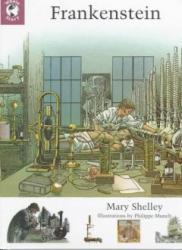
Frankenstein was a disappointment to me. As per the Romantic period, this novel used lots of scenes in nature to explain the characters’ emotional states. I do not mind a few good cries in a storm, but this novel borders on incessant outdoor melodrama. I decided to disregard both the plot and the setting in a vain attempt to enjoy the novel. I would only focus on the characters. As this was written by a female author, I looked forward to the female characters, which were awful. One, Justine, is a servant and seems only to exist in order to die. Elizabeth, who also seems to share this quality, is regarded as an object to be owned in a creepy incestuous manner by her cousin; she is apparently superior and virtuous only because of her noble birth. So, I dismissed the female characters to focus on the males, none of which were believable. Victor, his friend Henry, and his monster all were overly emotional, and they inspired no sympathy from me. With no likable characters and emotions running everywhere, I would only read Frankenstein if required.
Reviewer Grade: 9
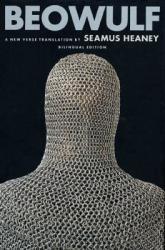
Beowulf is a classic heroic epic written one thousand years ago; I read the version that Seamus Heaney translated into modern English. This translation was excellent, managing to balance the original style and rhythm with a clear and understandable tone. Beowulf is a traditional hero. As a result, some of the plot points are fairly predictable. Nevertheless, I would recommend this epic poem to anyone who enjoys Tolkien or other fantasy series. Reading Beowulf, it is easy to see where more contemporary authors got their inspiration.
Reader Grade: 9
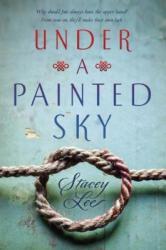
Under a Painted Sky was just okay for me. The book was probably very similar to being on the Oregon Trail - every once in a while something exciting would happen but for the most part, you're on the trail with a long stretch of boring ahead of you! That being said, I really do like the fact that Stacey Lee used a "historical" setting to present two strong, multicultural female characters. Annamae (African-American) and Samantha(Chinese) came into each others lives at a critical time and in the end, they realize that you can choose your family. Also being accepted for who you are was a central theme. But I felt Under a Painted Sky was a historical novel with not much history. The story takes place on the Oregon Trail, and we do hear of some of the hardships of traveling that the pioneers faced, but Stacey Lee only did one mention of Native Americans in the book. One sentence about the Cheyenne. It's hard to believe that on the trail, they didn't encounter any Native Americans. I think this book will be popular with teen girls. They will love the romance!
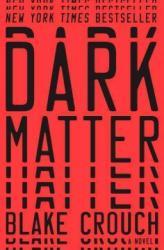
It seems to me that the multiverse is a popular topic in fiction today. Sure, there have been plenty of stories about parallel universes and the fractal branching of our decisions, but for some reason, there’s been an uptick in the number of these stories lately. Perhaps these stories are trying to find a better universe in which to live, or perhaps they’re trying to show us that the world we have could be much worse. Either way, Blake Crouch’s Dark Matter nails the multiverse plot by exploring all the different connotations of the ability to travel between parallel universes.
Presented in a traditional, three-act narrative, Dark Matter thrusts its protagonist into another version of his reality, ripping him away from his idyllic life. Using quantum physics as a form of magical hand-waving, the narrative then turns to the main character’s relentless search for his original universe. While the result of this exploration fits nicely into the book’s natural third act, I almost would have liked to see something a little different and less predictable. Still, all three acts are entertaining as a breathless thriller driven by the emotions and resolve of the main character.
The best part about Dark Matter is how it fleshes out all the consequences of being able to travel between parallel dimensions. It’s not nearly as simple as an It’s a Wonderful Life (1946) “you-never-existed” storyline. That being said, I do question why the “original” main character had the perfect life, especially if many of the other parallel universes seemed to have relatively close representations of the life he was trying to return to.
But, in the end, the narrative is driven by the characters, and these characters are well-developed and exciting to follow.
A multi-dimensional thrill ride, I give Dark Matter 4.5 stars out of 5.


